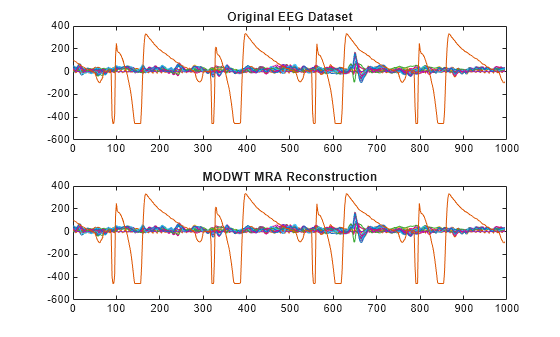dlmodwt
Deep learning maximal overlap discrete wavelet transform and multiresolution analysis
Since R2022a
Syntax
Description
w = dlmodwt(x)x using the
lowpass (scaling) and highpass (wavelet) filters associated with the Daubechies
least-asymmetric wavelet with four vanishing moments ("sym4"). By
default, dlmodwt uses periodic boundary extension and computes the
MODWT to the maximum level. dlmodwt requires Deep Learning Toolbox™.
[___] = dlmodwt(___,
specifies options using one or more name-value arguments in addition to the input arguments
in previous syntaxes. For example, Name=Value)BOUNDARY="periodic" specifies periodic
extension at the boundary.
Examples
Input Arguments
Name-Value Arguments
Output Arguments
Extended Capabilities
Version History
Introduced in R2022aSee Also
Functions
Objects
modwtLayer|dlarray(Deep Learning Toolbox)
Topics
- Practical Introduction to Multiresolution Analysis
- Comparing MODWT and MODWTMRA
- List of Functions with dlarray Support (Deep Learning Toolbox)
- Code Generation for dlarray (MATLAB Coder)
- Code Generation for dlarray (GPU Coder)
